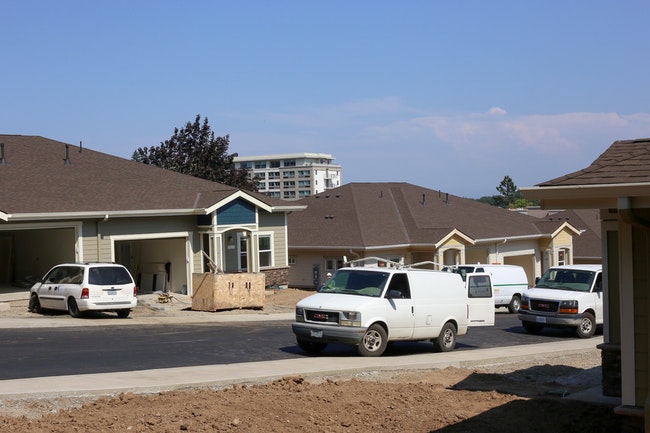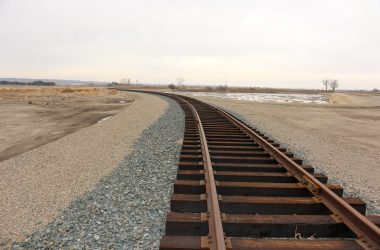
Capital Manor’s original tower in Salem stands in the distance while construction crews build 17 new duplexes to the west. (Troy Brynelson/Salem Reporter)
Despite Oregon’s widespread housing shortage, the amount of housing built in the state during the last decade reached a record low.
That was one of the unexpected conclusions state economist Josh Lehner included in a blog post on the last day of 2019.
“On a population growth-adjusted basis, Oregon built fewer new housing units this decade than we have since at least World War II,” wrote Lehner. “With data going back nearly 60 years, never have we built fewer new units on a sustained basis than we did in the 2010s.”
In a follow-up email, Lehner said that between 2010 and 2019 Oregon permitted 37 new housing units per 100 new residents. Between 1960 and 2009, Oregon permitted 47 per 100. Roughly speaking, he said that’s as if the state went from building one new housing unit for every two new people, to building one new unit for every three newcomers.
[ $5 a month for strong local news – SUBSCRIBE ]
Lehner wrote that housing affordability has worsened throughout the last decade, making it harder for residents to make ends meet and for young, working-age households to move to Oregon. He said the root of the problem is the low levels of housing construction.
In 2017, the median rent in Oregon rose to $1,079 in 2017 up from $816 in 2010, according to U.S. Census Bureau estimates. According to a report from the Oregon Center for Public Policy, one in three Oregon households struggle to afford housing.
During the last legislative session, Oregon became the first state to pass statewide rent control. Lawmakers also passed House Bill 2001, landmark legislation that would allow duplex, triplexes and other denser varieties of housing to be built on some land currently zoned single-family in most cities.
In a statement, House Speaker Tina Kotek also pointed to how the Legislature dedicated 200 million to affordable housing development, $55 million to affordable housing preservation and $50 million for state homeless assistance programs.
“More work lies ahead to make up for lost time and the state must continue to be a partner with local communities to develop more housing,” she said.
Michael Andersen, a senior researcher with the Seattle-based sustainability think tank Sightline Institute, said in an email that House Bill 2001 isn’t a “silver-bullet” solution and expected it to gradually change the state’s housing stock, noting pushback on the new law by cities.
Andersen blamed the lack of new construction on high costs. He said that if Oregon wants to slow the rise in home prices, it needs to build enough housing to keep up with its rising populations. Until then, he said high prices would hurt the state’s economy and throw the housing market out of wack.
“It’s like a game of musical chairs where people keep arriving faster than chairs,” he said.
‘A disappointment’
While the U.S. economy is currently in an unprecedented 10-year expansion, Lehner’s blog post included other unexpectedly glum takes.
“Economically, the 2010s were a disappointment,” wrote Lehner.
He wrote that during the last decade the economy was running below its potential as it recovered from the Great Recession of 2008. Although Oregon’s median household income has surpassed that of the U.S., growth has been uneven, he wrote.
According to Lehner, just nine of Oregon’s 23 rural counties have more jobs currently than they did a decade ago.
“Encouragingly, rural Oregon has very few places in permanent demographic or economic declines relative to patterns seen throughout the country,” he wrote. “However, even with decent to solid growth in rural Oregon overall, the state’s urban-rural divide increased in the past decade.”
Contact reporter JakeThomas at 503-575-1251 or [email protected] or @jakethomas2009.




